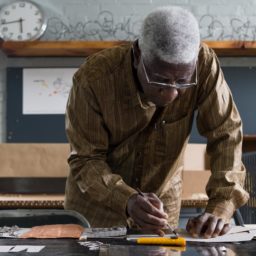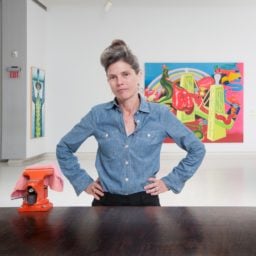The Carnegie Museum of Art’s recurring survey of art around the world, the Carnegie International, returns to Pittsburgh for its 57th edition this fall. But this year’s event, organized by curator Ingrid Schaffner, will be a bit different than previous iterations.
The ambitious exhibition, which has been in the works for over three years now, will transform parts of the museum into a coffee shop (thanks to collective Art Labor and American titan Joan Jonas) and a working art studio (courtesy of local artists Lenka Clayton and Jon Rubin).
These are some of the 30-plus new projects artists are creating for the show. Five of them—including work by artists Zoe Leonard, Postcommodity, and Dayanita Singh—have been unveiled today to offer visitors a taste of what to expect before the oldest North American survey of contemporary art opens to the public on October 13th.
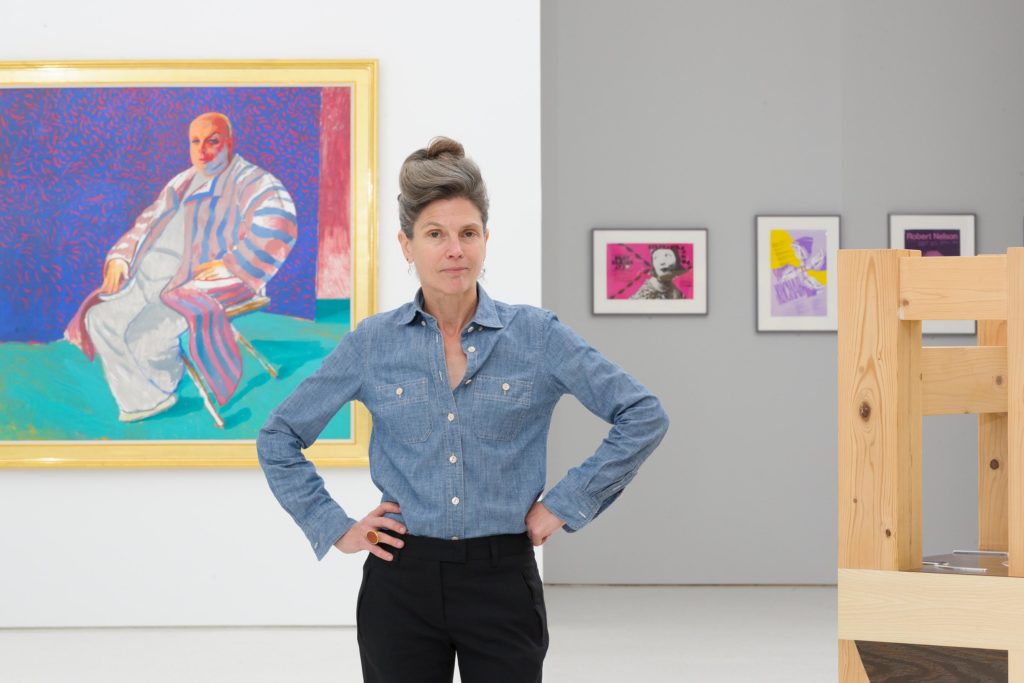
Ingrid Schaffner. Photo: Bryan Conley.
But what is perhaps the most unorthodox component of the show will be largely invisible to visitors. Schaffner believes her curatorial process—especially the travel—is every bit as important as final exhibition. To research and identify participating artists, she took five trips in total, inviting a fellow curator to accompany her on each one, with the mandate that the destinations had to be new for both of them. She also commissioned writers to recount the experience of each trip in a series of a travelogues, published both in the exhibition’s catalogue and online, alongside a series of creative essays.
“I think of it very much as a curatorial project,” Schaffner tells artnet News. “The international isn’t just an exhibition. The exhibition is a culmination of a much larger project.”
There’s also no curatorial premise for this year’s show, a purposeful decision on Schaffner’s part given the amount of ground—geographical, ideological, and otherwise—that it covers. “There’s never a theme for this kind of exhibition,” she explains. “You bring together artists, and they bring the world to the museum. Then we as visitors pull things out of that.”

Art Labor with Joan Jonas, Kerry James Marshall, and Ingrid Schaffner.
Schaffner does, however, point to the idea of shifting terrains as one that connects many of the artists’ proposed projects. It certainly relates to the first five projects announced by the Carnegie International today.
A new photographic work by Zoe Leonard, for instance, looks at the geopolitical, social, and ecological implications of the Rio Grande river’s role as a border between the US and Mexico. A line of Leonard’s photographs of the river will run along the upper walls of the museum’s neoclassical Hall of Sculpture. It will effectively encircle an installation by artist collective Postcommodity, whose work will be comprised of local materials that evoke Pittsburgh’s long lineage of industrial output—steel, glass, coal—and will be activated daily by performances from local jazz musicians.
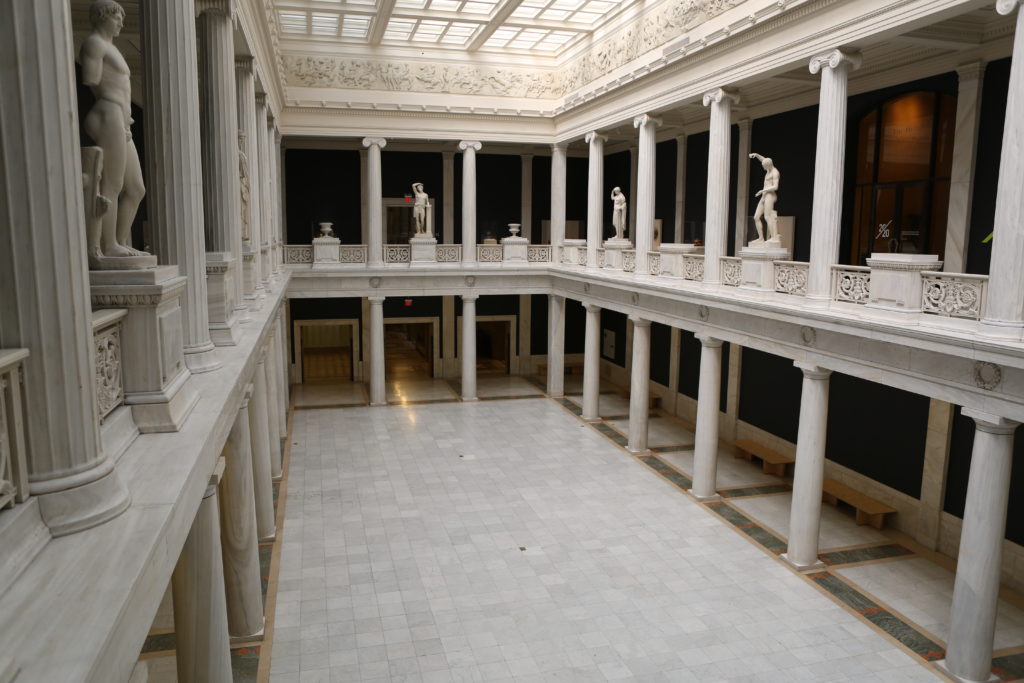
The Carnegie Museum of Art’s Hall of Sculpture. Photo: Erin Kelly.
Another collective, the Ho Chi Minh City-based group Art Labor, are teaming up with Joan Jonas for the exhibition. The group will set up a café in the museum selling coffee from Vietnam—the second largest producer of coffee in the world. Visitors will be able to lounge about in hammocks in a space that’s adorned with painted kites by Jonas.
Taking a page from her recent award-winning book Museum Bhavan, New Delhi-based artist Dayanita Singh will create a modular photo book for the International—a “portable exhibition” for viewers to experience the work on their own terms.
Finally, two local artists, Lenka Clayton and Jon Rubin, will turn the museum’s Forum Gallery into a fully functioning studio, where artists will be working throughout the exhibition to create a series of text paintings based on of the titles of works rejected by the International from 1896 to 1931.
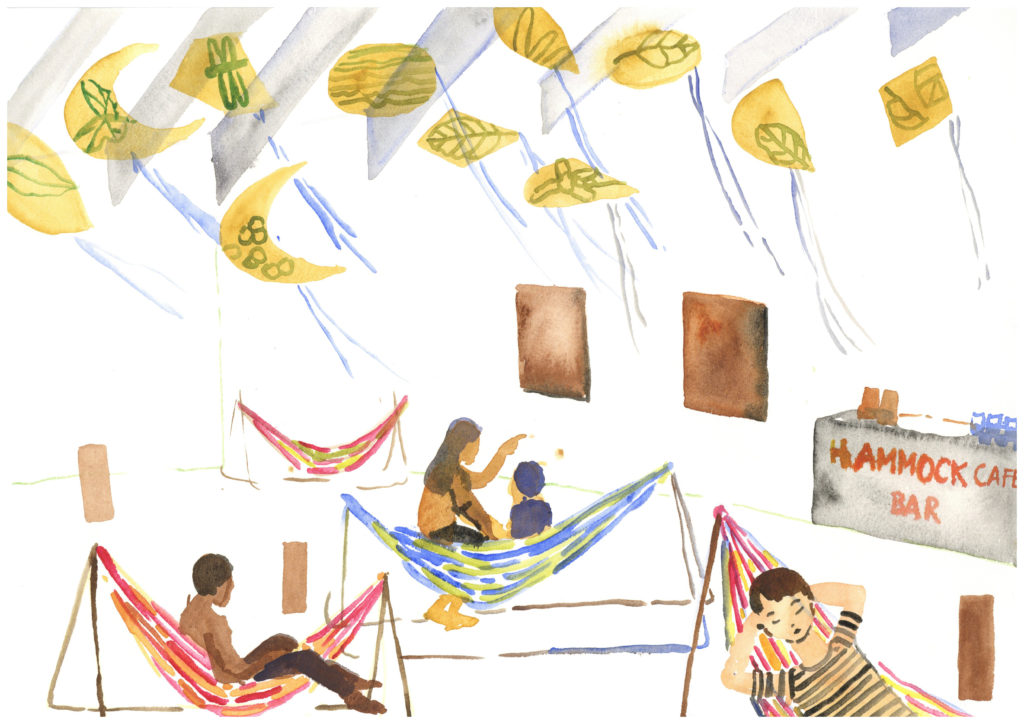
A sketch of the installation proposed by Art Labor and Joan Jonas. Courtesy the Carnegie Museum of Art.
On the whole, the exhibition is quite the international affair, including artists from five different continents. For Schaffner, though, it was equally important to include Clayton and Rubin and other voices from Pittsburgh.
“The International is not far away,” she explains. “It’s not something that you go out into the world and bring back. That’s the modernist model, and we’ve been operating under it for too long. The International is here. We’re all participating in it.”







